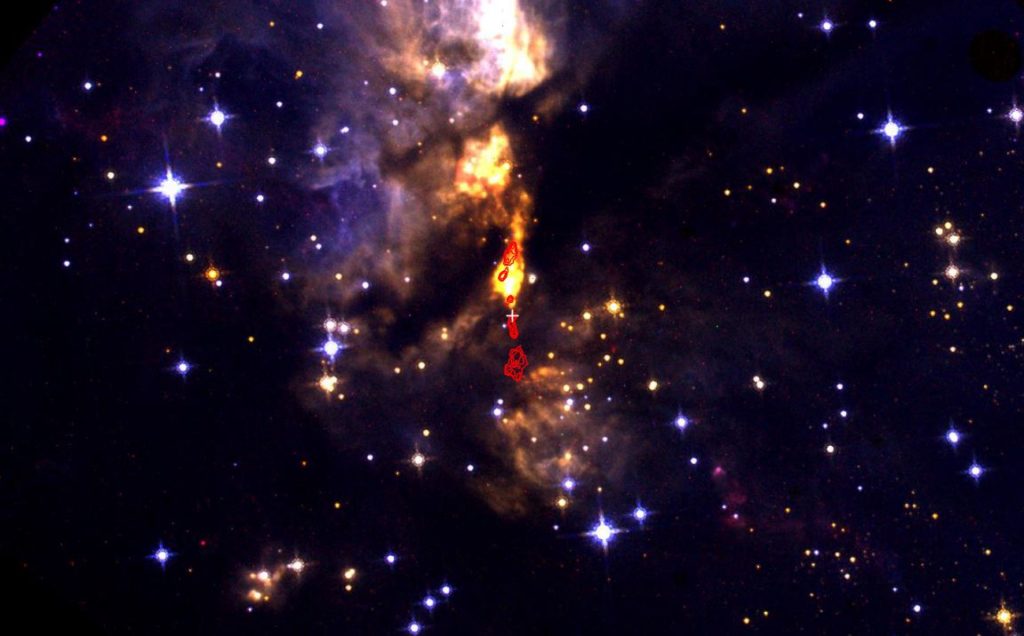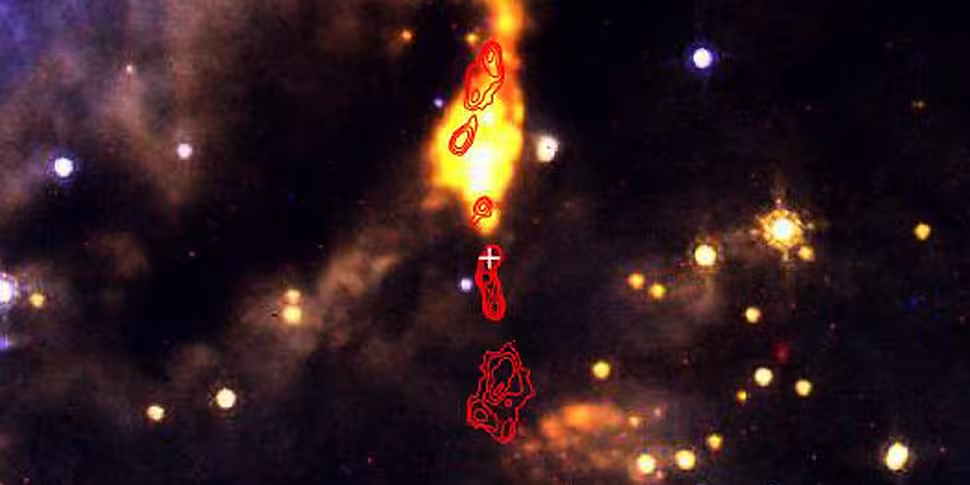An international team of astrophysicists have measured the total mass and energy from a jet driven by a massive protostar, for the first time.
The team, from seven different institutions in six countries, is being lead by researchers from the Dublin Institute for Advanced Studies (DIAS).
Protostellar jets play a key role in star formation.
The measurements and the values obtained by the team suggest that a common mechanism is in place in the formation of jets in low-mass and high-mass protostars.
The work was conducted by the star formation group from the DIAS and University College Dublin (UCD).
PhD student Rubén Fedriani lead the international collaboration.
On the discovery, he says: "We are now one step closer to filling in the gap between low-mass and high-mass star formation, which is very significant.
 Composite near infrared Hubble Space Telescope image and Very Large Array radio image of a nursery of young stars, including the dust-enshrouded high mass protostar G35.2-0.74N core B, located at the white plus sign. The red colour shows highlights emission from shocked gas in the jet from the protostar that is piercing out of the dust cloud towards us | Image: Supplied
Composite near infrared Hubble Space Telescope image and Very Large Array radio image of a nursery of young stars, including the dust-enshrouded high mass protostar G35.2-0.74N core B, located at the white plus sign. The red colour shows highlights emission from shocked gas in the jet from the protostar that is piercing out of the dust cloud towards us | Image: Supplied"We are on the cutting edge of science in this area, and having access to the best telescopes in the world via Ireland's membership with the European Southern Observatory, and collaborating internationally has helped greatly in getting us there."
Co-author Alessio Caratti adds: "This research is another important piece of the puzzle.
"After many years of debate, we are finally understanding how massive stars form, namely accreting matter from discs, while at the same time ejecting powerful and highly collimated jets."
The international team used data from the Hubble Space Telescope, Karl Jansky Very Large Array (VLA), and from the Very Large Telescope (VLT) at the European Southern Observatory (ESO).
Ireland recently joined the ESO, giving it access to the world's most advanced ground-based telescopes.
DIAS is the world's second, and Ireland's only, institute for advanced studies.
It conducts and publishes advanced research in Celtic studies, theoretical physics, astrophysics and geophysics.
The findings were published in Nature Communications.









